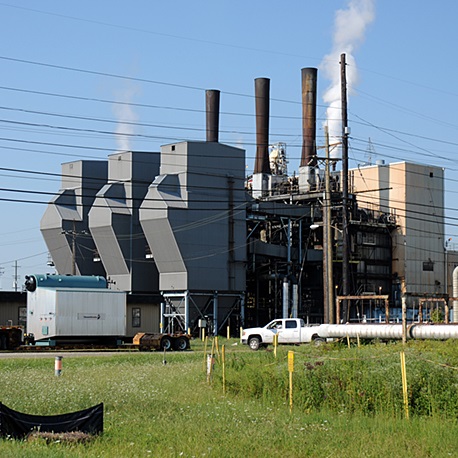
Matt Doll, Minnesota Environmental Partnership
On Tuesday, August 17, U.S. natural gas – also known as fossil gas – prices reached their highest level in 14 years. The reasons why are complex. A hot summer is driving high electricity use, natural gas extraction is relatively low, and trade disruptions caused by the Russian invasion of Ukraine have driven up demand in Europe.
Some analysts argue that the time is therefore ripe to boost drilling and fracking, driving prices down by tackling the supply side. That might reduce the prices for a time, but it won’t solve the underlying problem. Natural gas, like coal and oil, is a finite, unstable, and dangerous fossil fuel resource.
Consumers in the U.S. will always be at the mercy of natural gas prices as long as we continue to build infrastructure that relies on it. As long as we generate a significant percentage of our electricity and the majority of building heating with natural gas, we’ll be vulnerable to system shocks. When Texas was hit by a blizzard last year that massively disrupted its natural gas power generation, Minnesota wasn’t spared from the price shocks that rippled outward.
Meanwhile, natural gas – which mostly consists of methane – and its extraction is making our climate crisis worse. Methane is an outsize contributor to the climate crisis – while it doesn’t stay in the atmosphere nearly as long as carbon dioxide, it traps far more heat. The oil and gas industry is the single largest source of methane emissions in the United States due to its leaky wells.
Fortunately, the Inflation Reduction Act includes first steps to curb methane, including an emissions fee on the potent pollutant. It also includes historically large subsidies for building electrification and efficiency, which will help reduce the amount of natural gas that consumers use and drive down energy prices.
Building electrification can also boost human health, because the use of natural gas in cooking carries its own issues. Cooking with gas, even with some level of ventilation – can spread massive levels of carbon monoxide and nitrogen oxides. Those chemicals aren’t usually immediately fatal, but over the long term they can contribute to health issues like cancer and asthma. Lower-income households are especially vulnerable due to poor ventilation and older appliances. Gas stoves also have an alarming tendency to leak methane into the atmosphere, making a relatively small but significant contribution to climate change.
Some local governments, recognizing that natural gas reliance isn’t green or good for consumer’s wallets, are banning new natural gas connections in construction. Cities like New York, Seattle, San Francisco, have moved ahead with partial or complete bans on new gas infrastructure, even as some states pass legislation to preempt these bans.
What can Minnesota do?
In this environment, it’s especially frustrating that Minnesota Power is attempting to build a $700 million natural gas plant, the Nemadji Trail Energy Center (NTEC) to generate electricity in Superior, Wisconsin. Despite clear evidence that new natural gas infrastructure is a dead-end pathway that could make it much harder to meet our emissions reductions needs, NTEC has won approval from state regulators in both Wisconsin and Minnesota. However, it’s still working to get approval at the federal level, and groups like MEP members Honor the Earth, Minnesota Center for Environmental Advocacy, and Sierra Club are continuing to work against the plant.
Fortunately, the EPA at least partially agrees with those organizations. The agency recommended that the US Department of Agriculture redo its environmental review of NTEC, arguing that it did not adequately account for the plant’s greenhouse gas emissions. If the project can be stopped or stalled due to concerns with carbon emissions, it will be a significant victory for the climate and for the health of Twin Ports residents.
Beyond stopping new fossil gas plants, Minnesota has a tough nut to crack when it comes to moving away from this volatile fuel. Roughly two-thirds of homes in the state are heated by natural gas, which also generates 21% of our electricity. Our cold winters present a unique challenge for reducing those numbers.
Fortunately, the future isn’t far away. Increasingly inexpensive renewable electricity, improved heat pumps, and emerging technologies that can help cure what ails us, as long as they get adequate state and federal investment to get them established. The day may not be far away when Minnesotans won’t need to worry about the price of natural gas.
How you can help: Add your name to the Sierra Club’s petition for Minnesota Power to move toward renewable energy and away from harmful boondoggles like NTEC.
For previous columns, visit mepartnership.org/category/blog/. If you would like to reblog or republish this column, you may do so for free – simply contact the author at matthew@mepartnership.org.